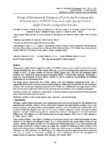Por favor, use este identificador para citar o enlazar este ítem:
http://www.alice.cnptia.embrapa.br/alice/handle/doc/965336Registro completo de metadatos
| Campo DC | Valor | Lengua/Idioma |
|---|---|---|
| dc.contributor.author | SOUSA, A. M. F. | pt_BR |
| dc.contributor.author | ESCÓCIO, V. A. | pt_BR |
| dc.contributor.author | PACHECO, E. B. A. V. | pt_BR |
| dc.contributor.author | VISCONTE, L. L. Y. | pt_BR |
| dc.contributor.author | CAVALCANTE, A. P. | pt_BR |
| dc.contributor.author | SOARES, A. G. | pt_BR |
| dc.contributor.author | FREIRE JUNIOR, M. | pt_BR |
| dc.contributor.author | MOTTA, L. C. C. | pt_BR |
| dc.contributor.author | BRITO, G. F. C. | pt_BR |
| dc.date.accessioned | 2013-09-02T11:11:11Z | pt_BR |
| dc.date.available | 2013-09-02T11:11:11Z | pt_BR |
| dc.date.created | 2013-09-02 | pt_BR |
| dc.date.issued | 2013 | pt_BR |
| dc.identifier.citation | Journal of Sustainable Development, Toronto, v. 6, n. 4, p. 106-117, Apr. 2013. | pt_BR |
| dc.identifier.uri | http://www.alice.cnptia.embrapa.br/alice/handle/doc/965336 | pt_BR |
| dc.description | Sponge-gourd (Luffa-Cylindrica) agrofiber residue (LC)-HDPE composites were manufactured by extrusion and injection moulding. The effects of fiber content, fiber size, screw speed and barrel zones temperatures on tensile strength at yield (TS) point, modulus of elasticity (MOE), flexure stress (FS) and Izod pendulum impact resistance were evaluated by using a design of experiments (DOE)-24 Factorial with centerpoint. Furthermore, a model was also determined for each response variable as well as to generate foreknowledge for additional combinations of the experimental factors. The design analysis showed that the LC-fiber content is the most important experimental factor, since it significantly affected three out of the four mechanical properties studied, specifically MOE, FS and Izod Impact resistance. The second most important parameter is the LC-fiber size. Additionally, the design analysis showed that screw speed and temperature of barrel zones did not present any influence on the properties investigated. Finally, the models were validated by comparing the results from additional experimental runs with the predicted values obtained from the respective model. | pt_BR |
| dc.language.iso | eng | eng |
| dc.rights | openAccess | eng |
| dc.subject | Resíduo de agrofibra | pt_BR |
| dc.subject | HDPE | pt_BR |
| dc.subject | Compósitos | pt_BR |
| dc.subject | Projeto experimental | pt_BR |
| dc.title | Design of experimental design as a tool for the processing and characterization of HDPE composites with sponge-gourds (Luffa-Cylindrica) agrofiber residue. | pt_BR |
| dc.type | Artigo de periódico | pt_BR |
| dc.date.updated | 2016-02-22T11:11:11Z | pt_BR |
| dc.subject.thesagro | Bucha | pt_BR |
| riaa.ainfo.id | 965336 | pt_BR |
| riaa.ainfo.lastupdate | 2016-02-22 | pt_BR |
| dc.identifier.doi | 10.5539/jsd.v6n4p106 | pt_BR |
| dc.contributor.institution | ANA MARIA F. SOUSA, UFRJ; VIVIANE A. ESCÓCIO, UFRJ; ELEN B. A. V. PACHECO, UFRJ; LEILA L. Y. VISCONTE, UFRJ; ANDRÉ P. CAVALCANTE, UFRJ; ANTONIO GOMES SOARES, CTAA; MURILLO FREIRE JUNIOR, CTAA; LUIZ C. C. MOTTA, INT; GIL F. C. BRITO, INTE. | pt_BR |
| Aparece en las colecciones: | Artigo em periódico indexado (CTAA)  | |
Ficheros en este ítem:
| Fichero | Descripción | Tamaño | Formato | |
|---|---|---|---|---|
| 2013058.pdf | 3,56 MB | Adobe PDF |  Visualizar/Abrir |









